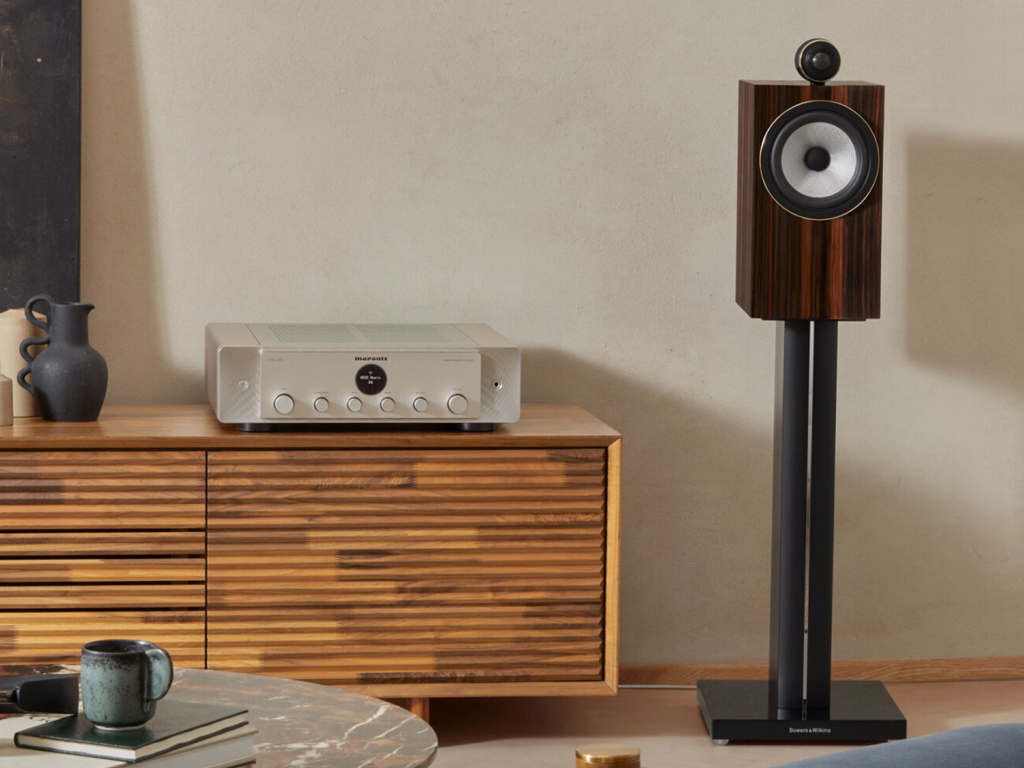Many years ago, I set up two identical systems—or so I thought—in our showroom to demonstrate the difference that cables can make. At the time, an engineer from Meridian UK was visiting and commented that there was something amiss with my set-up—one that cables alone could not account for.
Further investigation proved him right. I used different speaker stands on the two systems, and when identical stands were incorporated, most of the differences we were hearing disappeared. The significance of this has stayed with me since. Despite the importance of, for example, the cables used in your system, there are other changes that are sometimes very cost-effective and have a positive impact on the system’s performance. I believe that speaker stands are one upgrade that you should not dismiss lightly.
There has been much written about how and why speaker stands and spikes work, and most of it revolves around the two camps of coupling or decoupling your speakers to/from the stand/floor. There is one very simple, and yet rarely spoken of, explanation – particularly relative to bookshelf speakers. The role of a loudspeaker is simple, it creates sound by pushing air around the room. During this process, there’s a tendency for the speaker to move in the opposite direction – i.e. backwards – as for every action, there is an equal and opposite reaction, as Isaac Newton taught us.
This reaction does not need to be great to have an impact – simply check how far your drivers move when playing music. Consequently, any movement in the opposite direction can have a significant impact. I recall that during the nineteen eighties, it was recommended that you anchor your speakers to the wall behind them – via doweling, broomsticks or whatever. True, it was rather unsightly, but it worked! The less stable your speaker and stand is, the greater this problem becomes. Simply place your hand on the speaker, and if you can rock it then the combination is not significantly stable.
This stabilisation of the speaker/stand falls squarely into the theory that your speakers should be coupled with the surface they are placed on – which I have been a fan of since those early days. However – and there’s always a however – many years later, I was invited to audition a product that went against my beliefs. In fact, I recall being so sure that this product could not work that I agreed to take part in the demo only to be polite. That was IsoAcoustics, a product designed to physically decouple your speaker from the surface it is placed on – in most cases, the floor. And yes, you can place your hand on the speaker and rock it. Most importantly, though, the product works. Admittedly, most sets of IsoAcoustics that we sell are for floorstanding speakers, putting them somewhat outside this article, but it does raise the question of the benefits of coupling/decoupling.
Confused?
Well, you’re not alone! I have spent a considerable time researching forums and blogs to garner the opinions of others, and the most common response is, “it depends”. As mentioned, there are several other reasons speaker stands have an impact. One of these challenges the very term ‘bookshelf’ speakers, as a bookshelf (side table, etc.) is not the best place to put them! As aesthetically pleasing or convenient as this may be, it does introduce undesirable early reflection points, particularly in the bass area. There are always compromises to be made in the world of audio, and this is one. Loudspeaker stands also let you place your speakers in the ideal position, including height, rather than limitations imposed by the bookshelf. Maybe not the most attractive solution – but hey – another compromise.

My own personal credo is that if you are using bookshelf speakers, then keep the combination as solid and rigid as possible. And if you are using floor standing speakers, then you should investigate a decoupled approach such as IsoAcoustics. Speaker stands can have a greater impact on your system’s performance than some of the more costly upgrades you will be presented with.
Whatever the philosophy is that you follow, do not skimp on the speaker mounts then. The cost of doing this properly is small compared to the overall investment in your hi-fi system, and I guarantee that it will give returns well beyond the expenditure.
**This article by Len Wallis originally appeared on StereoNET on the 22/7/2024**





Great article from Len! Just a couple of points.
The law of action and equal-and-opposite reaction means that a speaker enclosure with conventional dynamic drivers will try to move back when the driver is moving forward, and vice-versa. This is due to the forces accelerating the moving mass of the driver rather than movement of air, which has very low mass.
The second point worth mentioning is that IsoAccoustics isolating feet designed for loudspeaker support are directional – they are stiff against back-and-forth movement compared with sideways. They need to be installed with the label facing forward or backwards. IsoAccoustics feet for other components are non-directional.
The importance of coupling dynamic speakers to something solid was brought home to me years ago when I had Quad electrostatic speakers standing on Duntech subwoofers (designed specifically to support Quad electrostatics). The only moving mass in the Quads is a flimsy film (like clingwrap) but the Duntechs each contained a single massive dynamic driver. When I put spikes under the Duntechs, I could tell the difference from the other end of the house!
– Richard Brand